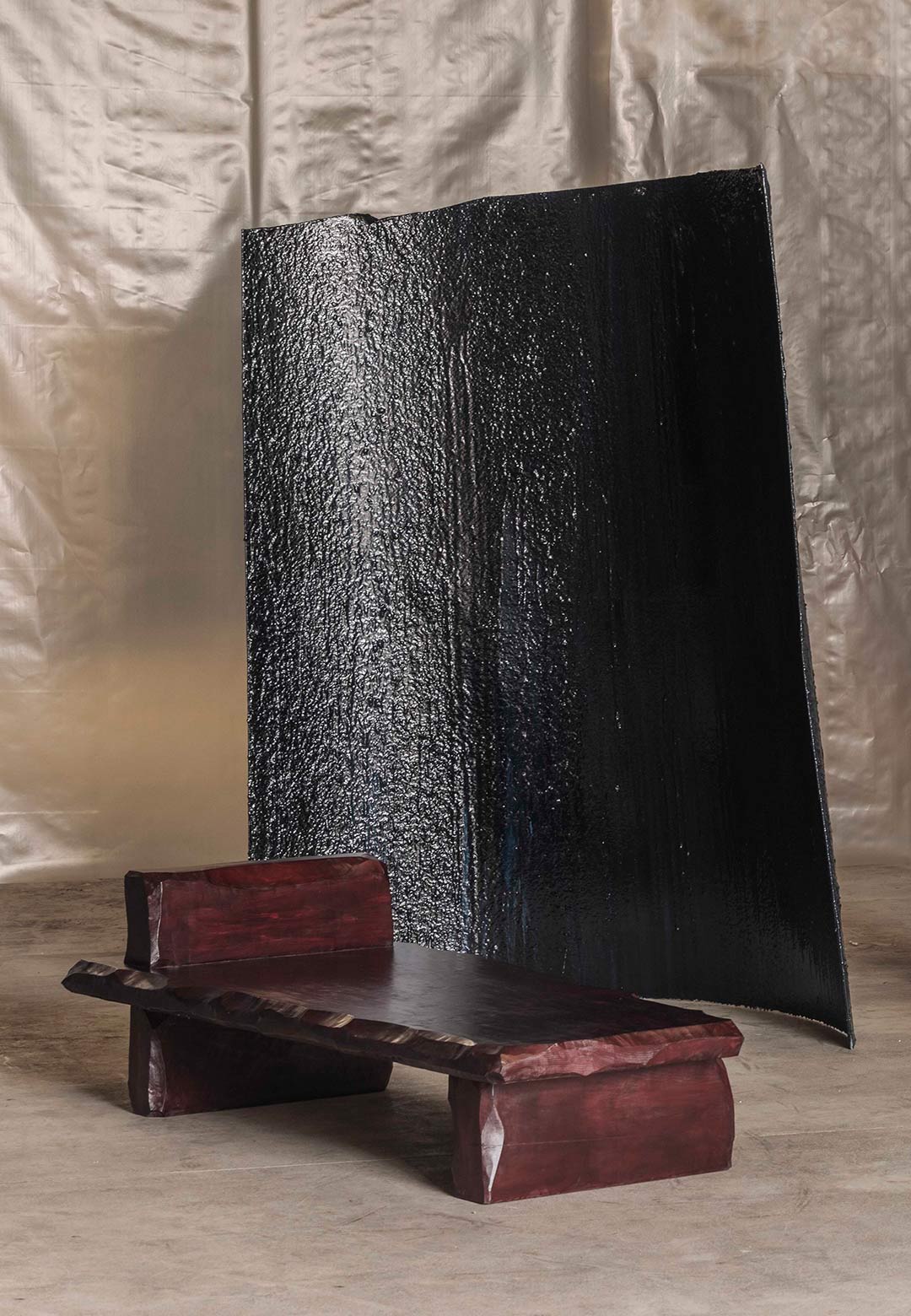Tim Vranken joins forces with Belgian designers Middernacht & Alexander and Linde Freya Tangelder for Salone del Mobile in Milan this year, to present a collaborative exhibition called STRATA. Exploring material, meaning and collaboration, the design exhibition, on view from April 7–13, 2025, in Via Rutilia 10/9, Milan, Italy will take place in the Fondazione Prada district at a spacious venue for industrial recovery. Built in 1949, the exhibition space was recently renovated and overlooks a lush veranda and private garden, featuring large south-facing windows. With STRATA, the furniture designers present their unique practices within a unified scenography.
Expanding on both the overlaps and differences that define their creative approaches, the designers emphasise the individuality, layering and artistic sensibilities of their respective practices. STRATA places them in a setting that embraces both freedom and tension, where their furniture designs exist in dialogue with one another and with the space itself.
A sense of openness and collaborative spirit remains central to the practice of these product designers, unfolding in a cohesive visual language through STRATA. Experimenting with layering—not only through material and form but also in the spaces between the works, where contrasts and connections emerge, shaping the interaction between individual expression and collective presence.
Based in Belgium, Vranken is known for his handmade furniture, geometric shapes and use of pure materials and has carved a niche space for himself in the design industry. Inspired by architectural shapes is Tangelder (founder of the design studio Destroyers/Builders), whose work balances modern and traditional elements, as her contemporary designs strive for sensory relevance and cultural value in design. Additionally, Sofie Middernacht and Maarten Alexander delve into the psychological and emotional layers of routine life—often dictating their choice of materials.
Moreover, texture acts as the primary protagonist across the presented works of all three designers. Their material choices vary, yet, there is a clear resonance and harmony in how they shape and define surfaces. The purity of their single-material compositions creates a sense of strength, leaving a lasting impact on viewers. While their approaches to texture are unique, the contrast in materials enriches their mutual appreciation for craftsmanship in the presented product designs at the upcoming design event.
Keep up with STIR's coverage of Milan Design Week 2025, where we spotlight the most compelling exhibitions, presentations and installations from top studios, designers and brands. Dive into the highlights of Euroluce 2025 and explore all the design districts—Fuorisalone, 5Vie, Brera, Isola, Durini and beyond—alongside the faceted programme of Salone del Mobile.Milano this year.






 Sign in with email
Sign in with email










What do you think?